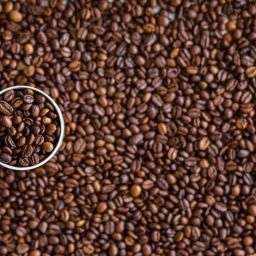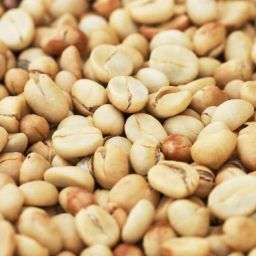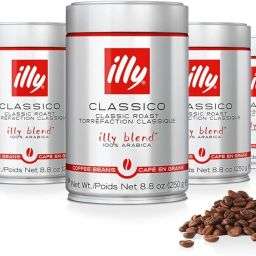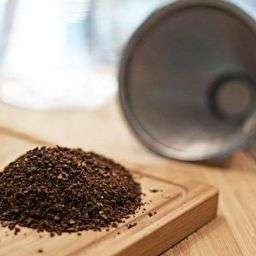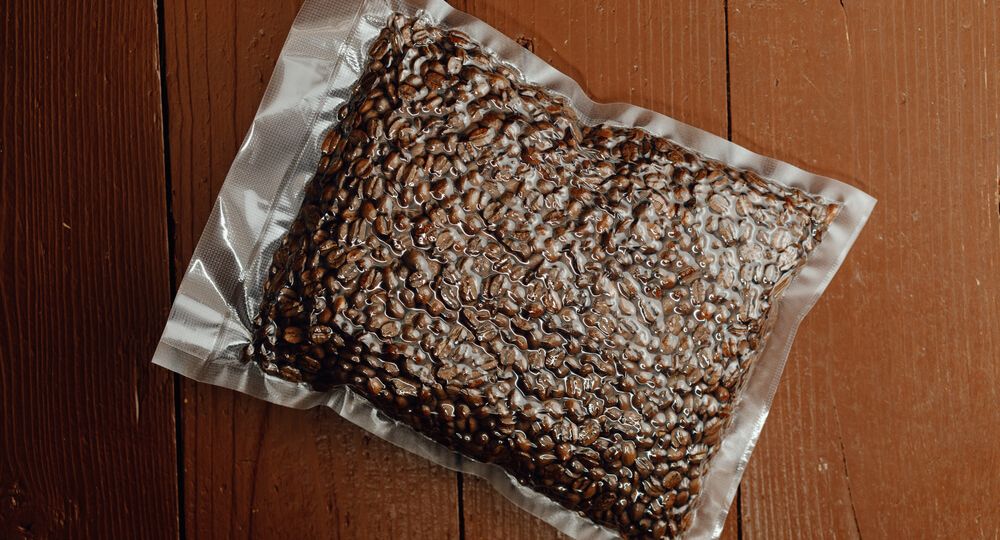
Vacuum sealing, in the context of coffee preservation, involves removing air from a package before sealing it. This method is utilized to extend the shelf life of coffee beans by minimizing exposure to oxygen, which accelerates the degradation process.
The essence of vacuum sealing lies in its ability to lock in freshness by creating an almost oxygen-free environment, thus slowing down the oxidation process that leads to staleness.
Preservation of Freshness
Vacuum sealing stands out as a pivotal method for preserving the freshness of coffee beans. By significantly reducing oxidation, vacuum sealing ensures that the beans retain their inherent flavors and aromas for longer periods.
Sources like theoldcoffeepot.com and fullcoffeeroast.com highlight how this method minimizes the beans’ exposure to air, a critical factor in maintaining coffee’s quality over time. The process is especially beneficial for coffee aficionados looking to enjoy a fresh cup of coffee, mirroring the beans’ original taste profile.
Space Efficiency
Aside from freshness preservation, vacuum sealing is lauded for its space efficiency. The compact nature of vacuum-sealed packages allows for more effective storage solutions, particularly in environments where space is at a premium.
As noted by theoldcoffeepot.com, the reduction in package size not only facilitates easier storage but also contributes to better inventory management, making it an ideal option for both personal and commercial settings.
Key Takeaways
- Enhanced Shelf Life: Vacuum-sealed coffee beans boast an extended shelf life, with the potential to preserve freshness and flavor for up to a year, as emphasized by theoldcoffeepot.com.
- Protection Against Staleness: By effectively minimizing oxidation, proper vacuum sealing acts as a defense mechanism against the staleness of coffee beans, ensuring that they remain fresh and flavorful for extended periods (theoldcoffeepot.com).
- Not a Complete Solution: Despite its numerous benefits, vacuum sealing does not halt the freshness degradation process entirely. It significantly delays the process, providing a practical solution for extending the usability of coffee beans without claiming to preserve indefinite freshness (fullcoffeeroast.com).
Step-by-Step Guide
Choosing the Right Materials
To ensure the longevity and freshness of your coffee beans, selecting the appropriate materials for vacuum sealing is crucial. Begin with whole bean coffee; it has a larger surface area than ground coffee, making it less susceptible to oxidation and spoilage. Whole beans maintain their flavor profile longer, providing a fresher cup of coffee upon brewing.
After roasting, coffee beans undergo a degassing process, releasing carbon dioxide gas. This process can take anywhere from a few days to a week. It’s essential to wait until this degassing period is complete before vacuum sealing the beans to prevent the vacuum-sealed bag from expanding or potentially bursting due to gas buildup.
Choosing the right vacuum sealer and bags is equally important. Opt for a vacuum sealer with a pulse option, allowing you to control the vacuum pressure and prevent the beans from being crushed. Use bags specifically designed for coffee beans, equipped with a one-way valve. This valve lets carbon dioxide escape while preventing oxygen from entering, thereby protecting the beans from oxidation (realhomecoffee.com, baristajoy.com).
Storage After Vacuum Sealing
Once vacuum sealed, the proper storage of coffee beans is vital to maximize their shelf life. Store the vacuum-sealed coffee beans in a cool, dark place away from sunlight, heat, and moisture. These conditions help maintain the beans’ freshness and prevent the degradation of flavors.
Avoid storing them in the refrigerator or freezer, as the fluctuation in temperature and moisture levels can negatively affect the beans’ quality. Once opened, aim to use the beans within two weeks for optimal freshness (baristajoy.com, chefsresource.com, kitchentoast.com).
Alternatives to Vacuum Sealing
Exploring Other Storage Options
While vacuum sealing is effective, other storage options can also preserve coffee beans’ freshness. Air-tight containers are a popular alternative, offering an easy and efficient way to keep air out and prevent the beans from going stale. These containers are readily available and can be a practical solution for daily use.
Nitrogen flushing is another method worth considering, especially for medium to large roasteries. This process involves replacing the oxygen in the packaging with nitrogen, a gas that does not react with coffee beans, thereby extending their shelf life. However, the machinery required for nitrogen flushing may represent a significant investment, making it less accessible for home use.
Each storage method has its pros and cons. While vacuum sealing and nitrogen flushing are more effective at preserving freshness over longer periods, air-tight containers offer convenience and accessibility for everyday coffee drinkers. The choice between these methods depends on the specific needs and resources of the coffee enthusiast (realhomecoffee.com, mtpak.coffee).
FAQs
Can Vacuum Sealing Alter Coffee Flavors?
Concerns about whether vacuum sealing can alter the flavor of coffee beans are common. The process itself, when done correctly, does not change the flavor profile of coffee beans. Vacuum sealing is designed to preserve the aroma and taste of the beans by preventing exposure to oxygen, which leads to flavor degradation.
As long as the vacuum sealing is performed properly, the quality and flavor of the coffee beans should remain intact, ensuring a delicious cup of coffee every time (chefsresource.com).
Is Special Equipment Needed for Vacuum Sealing Coffee Beans?
While a regular vacuum sealer can be used for coffee beans, there are special vacuum sealers designed specifically for coffee preservation. These specialized sealers often feature adjustable vacuum strength and the ability to seal bags without crushing the beans, catering to the delicate nature of coffee preservation.
However, a standard vacuum sealer, if used with care, can effectively vacuum seal coffee beans. The key is to select a sealer that suits your specific needs and preferences (chefsresource.com).
Can You Vacuum Seal Ground Coffee?
Yes, ground coffee can also be vacuum sealed to extend its freshness. Similar to whole beans, ground coffee benefits from the reduced oxygen exposure vacuum sealing provides. However, because ground coffee has a larger surface area than whole beans, it is more prone to oxidation.
Therefore, while vacuum sealing can help preserve its freshness, the protective effect may not be as long-lasting as with whole beans. This method is still a viable option for extending the shelf life of ground coffee, with the caveat that it may require more frequent consumption to enjoy its peak flavor (chefsresource.com).
Final Thoughts
Vacuum sealing coffee beans is a highly effective method for extending their freshness and preserving their flavor profile. By minimizing the beans’ exposure to oxygen, vacuum sealing helps to prevent the oxidation process that leads to staleness. While there are concerns about flavor alteration, proper vacuum sealing techniques should not affect the coffee’s taste.
Special equipment designed for coffee can offer additional benefits but is not strictly necessary. Both whole beans and ground coffee can benefit from vacuum sealing, though whole beans tend to retain freshness longer. Ultimately, the key to enjoying a consistently flavorful cup of coffee lies in proper storage methods, among which vacuum sealing is a valuable option.


